Scarlet Gilia, Scarlet Skyrocket, Scarlet Trumpet, Skunk Flower - Ipomopsis aggregata
|
Ipomopsis aggregata - Scarlet Gilia, Scarlet Skyrocket, Scarlet Trumpet, Skunk Flower. The Ipomopsis genus name is from Greek for Striking Appearance (ipoo + opsis.) The Scarlet Gilia common name results from the significant amount of time it was classified in the Gilia genus as Gilia aggregata. The Gilia genus is named for Italian clergyman and naturalist Filippo Luigi Gilii. swcoloradowildflowers.com has a good biographical sketch of Mr. Gilii.
Ipomopsis gilia has been bounced around in several different genuses (all within the Phlox family) and even recently some authorities still classified it in three different species. Most authorities now seem to have agreed upon this single species classification, but with several different subspecies still being used. As is the case with so many other western plant species, Scarlet Gilia was collected by Lewis and Clark in 1806 on their famous expedition, finding it in what is now northern Idaho.
The Primary pollinators are hummingbirds (attracted more to the red form) and long-tongued moths, who seem to be attracted more by the unpleasant odor of the plant. This unpleasant odor gives it the "Skunk Flower" common name sometimes applied.
Found in:
AZ, CA, CO, ID, MT, NM, NV, OK, OR, TX, UT, WA, WY
Leave comments on Ipomopsis aggregata at this link. | 
Distribution of Ipomopsis aggregata in the United States and Canada:
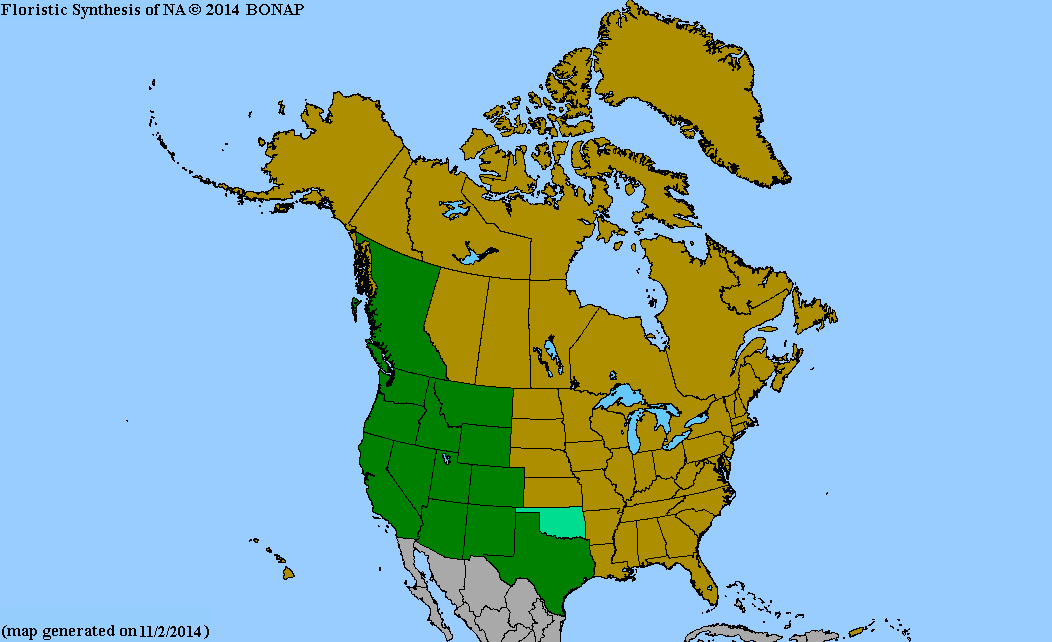
Map courtesy of The Biota of North America Program.
Map color key
Search Our Database: Enter any portion of the Scientific, Common Name, or both.
Do a general Google search of the entire site:
#ad
 Follow USWildflowers on Twitter
| | Site: Boise County, ID Date: 2010-June-13 | Photographer: Gerald C. Williamson
Nikon D60
| | The flowers are trumpet shaped with usually 5 lobes, as is the case with most members of the Phlox family. The plant presented here has 6 lobes (I have also photographed a wild blue phlox with a 6-lobed blossom.) Ipomopsis aggregata will usually have some mottling of a different color (red, yellow, white) on the lobes and in the corolla tube. The flower is usually between 1.5 and 2.5 inches long. | | 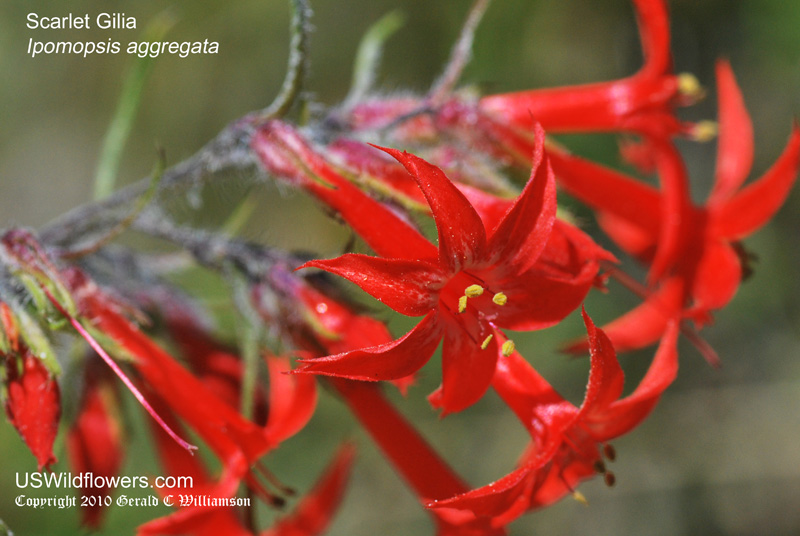
| | Site: Boise County, ID Date: 2010-June-13 | Photographer: Gerald C Williamson
Nikon D60 | | The flowers are most readily recognized in their red (scarlet) phase, but the blossoms may also be pink or even white. This color variation occurs not only from population to population, but also within populations, changing over time during the blooming season, even on the same plant. The blossoms are usually on one side of the stem.
References
| | Click on the photo for a larger image
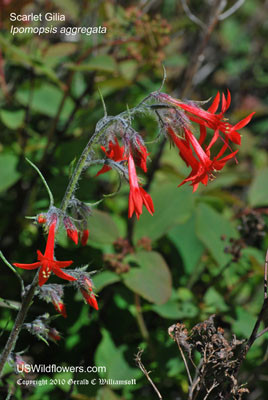
| | Site: Yellowstone Branch Line Trail, Warm River Campground, Caribou-Targhee National Forest, ID Date: 2019-August-23 | Photographer: Gerald C Williamson
Nikon D7000 | | The plant in this photo might be Ipomopsis tenuituba rather than I. aggregata. I have started using the SEEK app by iNaturalist to help with identification, and I. tenuituba was the species it named. While the coloration of the flower tends toward I. tenuituba (Slendertube Skyrocket), I haven't found records of that species being found within a couple of hundred miles of Warm River Campground, and the shape of the corolla tube and the corolla lobes seem to be more in line with Ipomopsis aggregata. It is possibly a hybrid or a waif. | | Click on the photo for a larger image
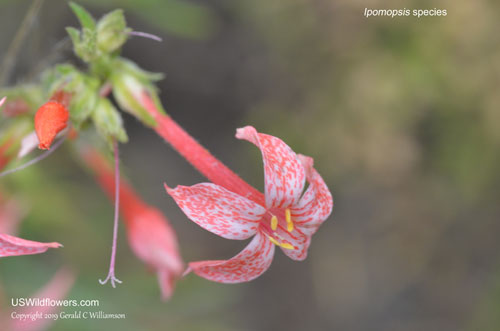
| | Site: Boise County, ID Date: 2010-June-13 | Photographer: Gerald C Williamson
Nikon D60 | | Pinnately lobed Scarlet Gilia leaves are both basal and cauline (stem), but the basal leaves have withered by flowering time. The basal leaves will have 9 to 11 lobes; cauline 5 to 7. | | Click on the photo for a larger image
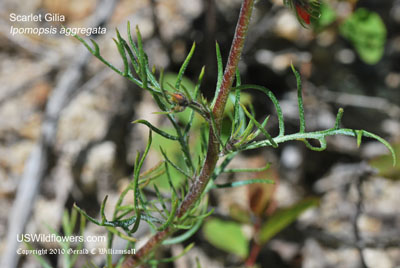
|
References used for identification and information:
|
|
| |
| #ad
|
|






